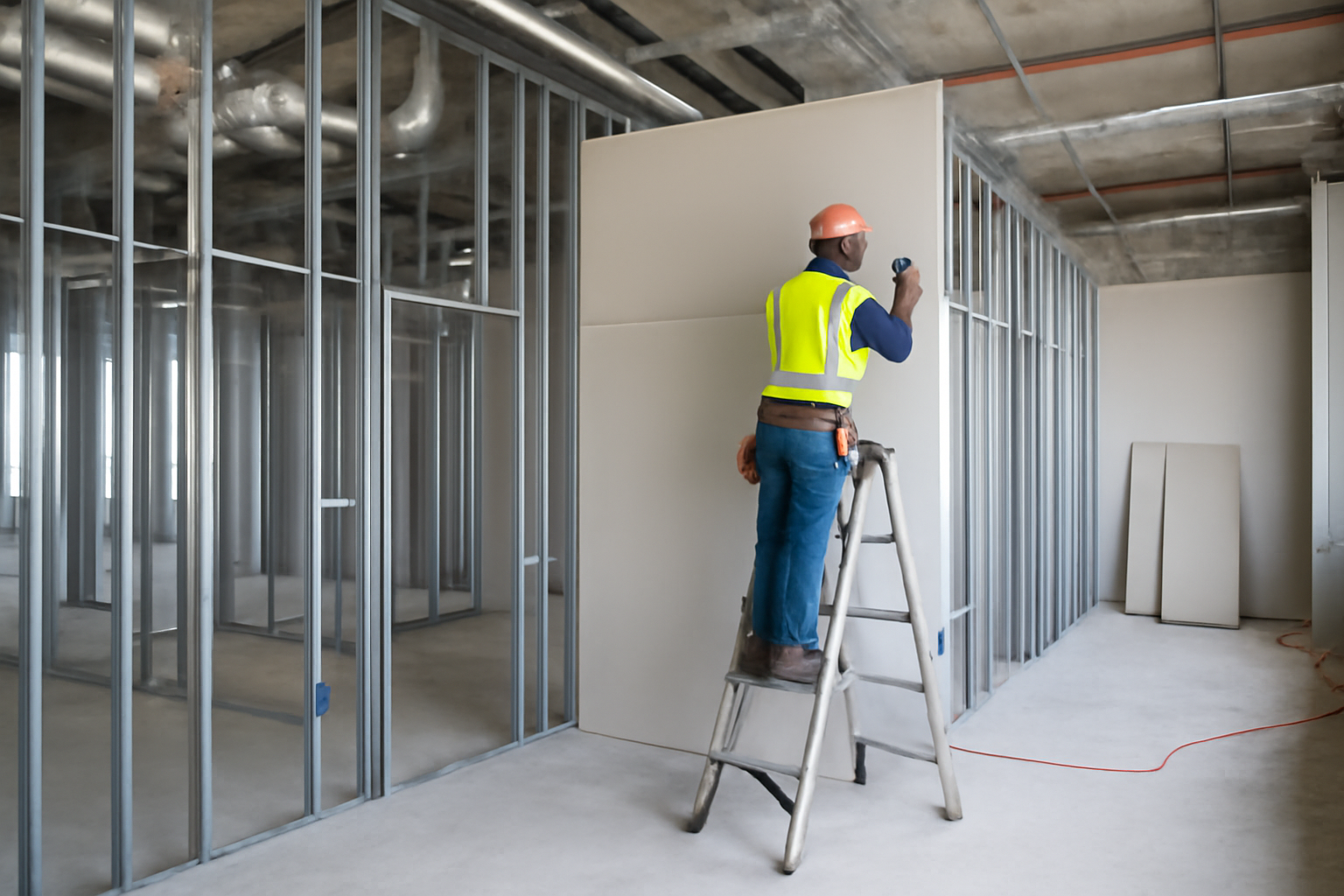
When estimating drywall costs, the distinction between interior and exterior wall assemblies is more than just a material shift—it affects labor productivity, safety planning, weather allowances, and system complexity. For architects, engineers, and general contractors, understanding what changes in estimating from inside to outside is critical to building accurate project budgets and avoiding unforeseen site conditions.
Interior and exterior walls differ significantly in purpose and construction detail. While both may share gypsum-based panels, the environmental exposure of exterior walls introduces additional challenges:
These differences must be accounted for in estimating not only the quantities but also the labor units and sequencing.
Installing drywall on exterior walls introduces factors that reduce installation efficiency:
Labor multipliers often differ by 20%–40% between interior and exterior scopes depending on project height and exposure levels.
Exterior walls generally include more complex assemblies that extend beyond board installation:
Failing to account for these extras in estimates may result in critical scope gaps that trigger change orders during construction.
Active Estimating supports estimation workflows that allow for differentiated logic per wall type. Estimators can assign objective quantities while tagging subjective cost drivers like weather impacts or special access requirements. This makes estimating across multiple wall conditions more accurate and adaptable to design changes.
In one urban commercial project, curtain wall backing and sheathing were scoped under drywall. The estimator originally applied interior wall rates. Once the site work began, moisture-resistant exterior sheathing with sealants and longer fasteners were required. The labor adjustment and additional material added 27% to the original budget. Using drywall estimating tools with real-time assembly swapping could have prevented the misclassification and provided greater budget confidence up front.
Interior and exterior drywall walls may appear similar on paper, but the cost implications are significant. Estimators must apply assembly logic, contextual labor rates, and coordination assumptions to properly account for exterior complexity. With tools like Active Estimating, teams can transition between scopes seamlessly—ensuring the estimate reflects the true scope of work before a single panel is installed.
Contact Information:
Active Estimating
508 2nd Street, Suite 208
Davis
California
95616
Rich Schoener
richard@activeestimating.com
(877)
Schedule a personalized demo to see how Active Estimating can work for your specific needs.
